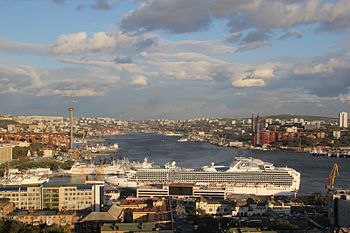
Fort Lauderdale is located in the east-central portion of Broward County, Florida approximately 23 miles north of Miami and 42 miles south of Palm Beach. The City shares boundaries with nine other municipalities, as well as unincorporated areas of the County. Encompassing more than 33 square miles, Fort Lauderdale is the seventh largest city in Florida and the largest of Broward County’s 30 municipalities.
Incorporated on March 27, 1911, the City of Fort Lauderdale is situated on the southeast coast of Florida, centrally located between Miami and Palm Beach. Encompassing more than 33 square miles with a population of nearly 180,000, Fort Lauderdale is the largest of Broward County's 30 municipalities and the seventh largest city in Florida. Embraced by the Atlantic Ocean, New River and a myriad of scenic inland waterways, Fort Lauderdale truly lives up to its designation as the "Venice of America."
The City of Fort Lauderdale is named for a Second Seminole War fortification built on the banks of New River in 1838. In that year, Major William Lauderdale led a detachment of Tennessee Volunteers south along the east coast of Florida to capture Seminole agricultural lands and battle the elusive Indian warriors. Altogether, three forts named after Major Lauderdale would be constructed: the first at the fork of New River; the second at Tarpon Bend; and the largest on the beach at the site of Bahia Mar. None of the forts survives today.
An advantageous economic climate is helping the City of Fort Lauderdale establish itself as a world-class international business center and one of the most desirable locations for new, expanding or relocating businesses. Once known strictly as a tourism-based economy, Fort Lauderdale now supports a diverse range of industries, including marine, manufacturing, finance, insurance, real estate, high technology, avionics/aerospace, film and television production.
 |
| Aerial Downtown of Ft. Lauderdale |
Fort Lauderdale also offers an outstanding quality of life, highlighted by a semi-tropical climate, rich natural beauty and array of cultural, entertainment and educational amenities. Blessed with over 3,000 hours of sunshine each year and pleasant year-round ocean breezes, world-famous Fort Lauderdale Beach offers premier opportunities for recreation, relaxation and enjoyment. The picturesque Riverwalk serves as the cornerstone of the City's arts, science, cultural and historic district which features the Broward Center for the Performing Arts, Museum of Discovery and Science, Museum of Art and Old Fort Lauderdale Village and Museum. Las Olas Boulevard has gained international acclaim as Fort Lauderdale's centerpiece of fashion, fine dining and entertainment. In addition, the City's downtown area is home to Broward Community College, Florida Atlantic University, Florida International University, the award-winning Broward County Main Library, federal, county and school district offices.
Through the cooperative efforts of residents, businesses and local government, Fort Lauderdale has evolved into a City that offers the best of both worlds - an attractive business environment and an outstanding quality of life. Fort Lauderdale is a great place to live, work and raise a family, and the City looks forward to continuing to build upon its success to meet the challenges of the 21st Century and beyond.
OFFICIAL DETAILS:
 Fort Lauderdale is located in the east-central portion of Broward County, Florida approximately 23 miles north of Miami and 42 miles south of Palm Beach. The City shares boundaries with nine other municipalities, as well as unincorporated areas of the County. Encompassing more than 33 square miles, Fort Lauderdale is the seventh largest city in Florida and the largest of Broward County’s 30 municipalities.
Fort Lauderdale is located in the east-central portion of Broward County, Florida approximately 23 miles north of Miami and 42 miles south of Palm Beach. The City shares boundaries with nine other municipalities, as well as unincorporated areas of the County. Encompassing more than 33 square miles, Fort Lauderdale is the seventh largest city in Florida and the largest of Broward County’s 30 municipalities.





















